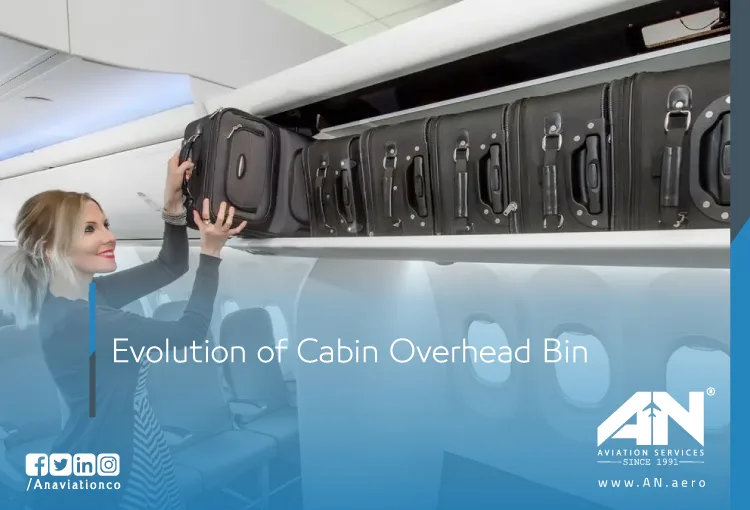
When stepping onto an airplane, one of the first things passengers notice is the overhead bin—a seemingly simple yet vital component of the aircraft cabin. It’s a space most of us rely on to stow carry-on luggage, jackets, or personal items, freeing up space under the seat in front of us. But the overhead bin hasn’t always been the spacious, ergonomic storage feature we see today. Its evolution reflects decades of innovation aimed at addressing the increasing demand for overhead space, driven by a surge in air travel and passenger expectations.
Let’s delve into the fascinating story of how overhead bins evolved from rudimentary compartments into the sleek, space-efficient marvels we see today.
The Early Days: From Open Racks to Closed Compartments
In the early days of aviation, overhead storage was virtually nonexistent. Airplanes were primarily designed to transport passengers rather than their belongings. Passengers carried minimal luggage, which was stored in the cargo hold, and any carry-on items were often small enough to fit under the seat.
However, as air travel gained popularity in the mid-20th century, airlines began adding open racks above the seats for items like coats, hats, or lightweight bags. These racks were essentially exposed shelves, leaving items unsecured during flight. Turbulence often meant passengers’ belongings could shift or even fall, creating safety risks for both passengers and flight attendants.
The Birth of Closed Overhead Compartments
In the 1960s, aircraft manufacturers introduced closed overhead bins, which marked a significant improvement in cabin design. The bins were equipped with secure doors to keep passengers’ belongings in place, addressing safety concerns. This transition was a game-changer, particularly as the volume of carry-on luggage began to grow.
Closed bins not only improved passenger safety but also elevated the aesthetic of airplane interiors. Airlines realized that the bins could be seamlessly integrated into the cabin design, creating a cleaner and more organized look. These early overhead bins were relatively small compared to today’s standards, but they were a step forward in accommodating the changing needs of passengers.
Overhead Bins in the Jet Age: Addressing Growing Needs
As airlines embraced jet-powered aircraft in the 1970s and 1980s, air travel became more accessible and affordable. With this shift, passengers started bringing larger carry-on bags, and airlines needed to address the bin space crunch.
Aircraft like the Boeing 747, introduced in 1970, featured larger overhead compartments to match the increasing size of cabins and accommodate more passengers. Despite this, the bins still struggled to keep up with the growing demand for overhead space, especially during fully booked flights. It became increasingly common for passengers to have their bags gate checked, as the available storage couldn’t meet the demand.
The tension between passenger expectations and storage capacity continued to grow, spurring manufacturers to innovate further.
Modern Overhead Bins: Optimized for Space and Convenience
Fast-forward to the 21st century, and overhead bins have undergone a dramatic transformation. Aircraft manufacturers, such as Airbus and Boeing, now prioritize bin space in cabin design, recognizing its critical importance to passengers. Modern overhead bins are engineered to optimize every inch of available space while ensuring easy access for passengers and flight attendants.
Key innovations in modern overhead bins include:
- Pivoting Bin Designs: Many aircraft now feature bins that pivot downward as they are opened, making it easier to load and unload luggage while maximizing storage capacity.
- “Space Bins” and “XL Bins”: Boeing’s 737 MAX and Airbus’s A320neo families offer larger bin designs, allowing passengers to store their carry-ons wheels-first. This configuration increases overall capacity while reducing the need for gate-checked bags.
- Lightweight Materials: Manufacturers use advanced lightweight materials to ensure bins don’t add unnecessary weight to the aircraft, improving fuel efficiency while maintaining durability.
These innovations reflect airlines’ desire to improve the boarding process, reduce delays, and enhance passenger satisfaction.
Overhead Bins and the Role of Flight Attendants
Despite advancements in bin design, flight attendants remain instrumental in managing overhead space during boarding. They assist passengers in stowing their luggage, ensuring that the bins are used efficiently and safely. However, their role has evolved alongside bin technology.
For instance, the introduction of larger bins has reduced instances of passengers struggling to fit oversized bags, easing the workload for flight crews. Additionally, airlines now provide clearer guidelines for carry-on luggage dimensions to minimize conflicts over bin space.
The Future of Overhead Bins
The future of overhead bins is set to be even more innovative. Airlines and manufacturers are exploring ways to further streamline the boarding process and eliminate gate checks altogether.
One emerging concept is the introduction of individual storage compartments, where each passenger has a dedicated bin for their carry-on. This approach, while still in the experimental stage, could significantly enhance passenger convenience.
Another area of focus is the integration of smart technology. Future bins may feature sensors to detect available space and guide passengers to open compartments, reducing boarding delays. These advancements align with the broader trend of digitization and automation in aviation.
Conclusion: A Reflection of Changing Passenger Needs
The evolution of the overhead bin is a testament to how the aviation industry adapts to meet the ever-changing needs of passengers. From the open racks of the past to today’s spacious and efficient designs, overhead bins have come a long way in improving the passenger experience.
As air travel continues to grow, innovations in overhead space will remain a priority, ensuring that passengers can board flights with ease and comfort. With advancements in technology and design, the humble overhead bin will continue to be an essential part of the flying experience, offering convenience, safety, and a touch of sophistication to every journey.

